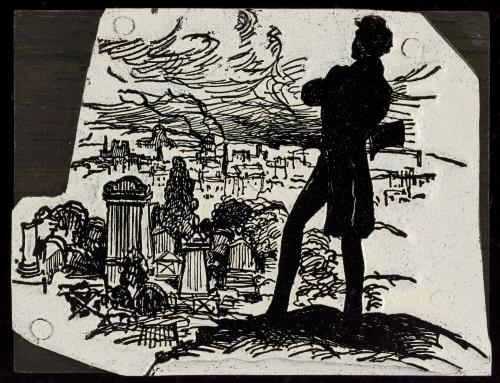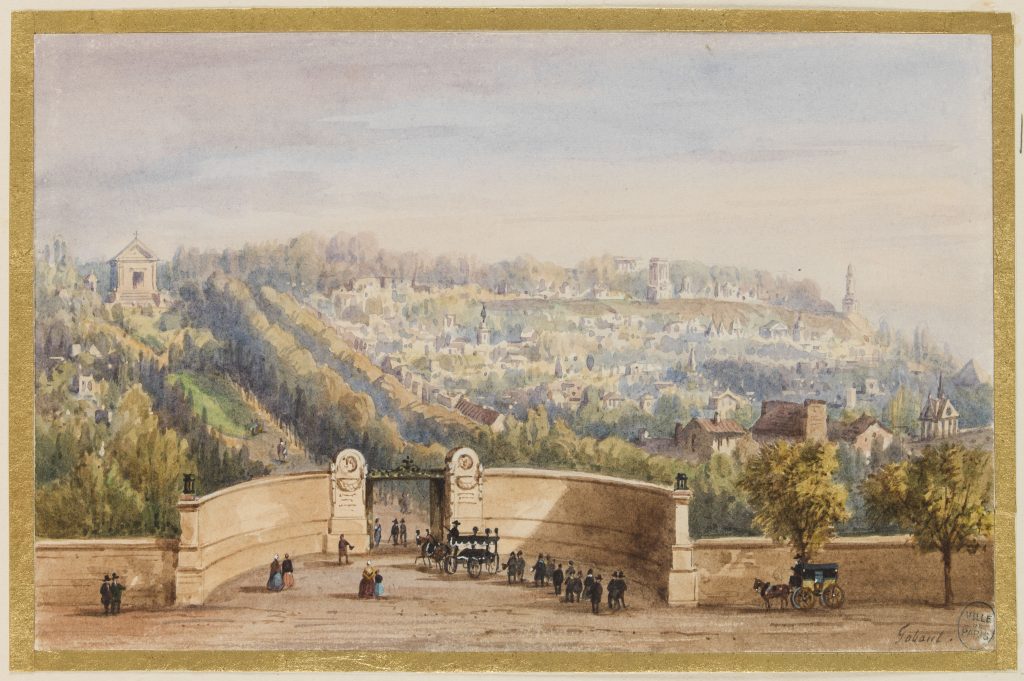
‘Rastignac was left alone. He went a few paces further, to the highest point of the cemetery, and looked out over Paris and the windings of the Seine; the lamps were beginning to shine on either side of the river… He glanced over that humming hive, seeming to draw a foretaste of its honey, and said magniloquently: Henceforth there is war between us!’
Honoré de Balzac, Le Père Goriot, 1834. (translated by Ellen Marriage)
The Cemetery where Rastignac climbed up to defy Paris, the one where they bury handsome Lucien de Rubempré and where the fierce Vautrin collapses is Père-Lachaise.
Designed as a landscaped space by the architect Alexandre Théodore Brongniart, this garden cemetery was, from the beginning open to the public as much as possible, and quickly became a popular choice for pleasant walks and meditation. Visitors’ guides were published, where one may peruse the musings of philosophical strollers and, already, lists of tombs belonging to celebrities. This great necropolis of eastern Paris opened in 1804. Nicolas Frochot, then Prefect of the Seine département, wished for this new urban installation to answer the needs of Parisians who had seen their small parish cemeteries closed in the 18th century for reasons of hygiene. Three large burial grounds were thus opened. Then located at the periphery of Paris, these were the eastern cemetery, known as Père-Lachaise, the southern, known as Montparnasse, and finally on the north, the Montmartre cemetery.

